Organic gardening for beginners | infographic
Posted in Healthy Home & Garden on November 23, 2014. Last modified on April 21, 2019. Read disclaimer.
View text alternative for Beginner's Guide to Organic Gardening.

NorthCarolinaHealth.com Infographic of Tips for Beginning Organic Gardeners
Add this infographic to your website by copying and pasting the following embed code:
(Click in box to select all.)
+ Free Shipping & Returns on Eligible Items.
(*Amazon's Top 100 list updated hourly.)
Text alternative for Beginner's Guide to Organic Gardening infographic
Brief History of Agriculture
(Image: Illustration of gardening monk.)
Prior to World War II, virtually all gardening and farming was done "organically," that is, without the use of petroleum-based fertilizers, herbicides, fungicides and pesticides. Once chemicals developed for military applications were applied to agriculture in the 1940s, however, food production boomed. Much more recently, Genetically Modified seeds (GMO) have been developed to produce especially drought and pest resistant crops.
We've gone from a single U.S. farmer producing enough to feed 2 1/2 people in 1900 to feeding well over 100 today. On the other hand, modern growing techniques have also lead to increased soil erosion, pesticide-runoff, chemical-resistant weeds and insect pests, potential health risks to farmers and rural communities, and foods that may contain toxic pesticides and, according to a report from University of California, Davis1, fewer nutrients.
So, how were farmers from ancient times up to the 1940s able to grow fruits and vegetables without the use of synthetic chemicals? They'd learned how to support the "food web"... nature's complex harmony between plants, insects, animals, microorganisms and weather. They grew foods organically!
History of Agriculture - Timeline and Map
(Image: Timeline of the history of agriculture)
16 Popular Fruits & Vegetables with High Pesticide Residue
(Image: Illustration of man with pesticide sprayer.)
Starting with the highest2
- Apples
- Strawberries
- Grapes
- Celery
- Peaches
- Spinach
- Sweet Bell Peppers
- Nectarines (Imported)
- Cucumbers
- Cherry Tomatoes
- Snap Peas (Imported)
- Potatoes
- Hot Peppers
- Blueberries (Domestic)
- Lettuce
- Kale & Collards
8 Vegetables That We've Found To Be Easy to Grow in the Home Garden
(Image: Illustration of woman working in garden.)
Listed in no particular order. Coincidentally, many may be expensive or heavily sprayed is purchased at the store...
- Sweet Potatoes
- Strawberries
- Bush Cucumbers
- Cherry Tomatoes
- Kale & Collards
- Spinach
- Radishes
- Lettuce
Nature's Food Web
(Image: Illustration of food cycle/food web.)
- Plants use sunlight, water and soil nutrients to produce food (energy).
- Animals eat plants (or other plant-eating animals) to produce waste.
- Worms, bacteria and fungi (which can all be killed off by synthetic fertilizers3) work to decompose animal and plant waste into nutrients.
- Repeat!
20 Tips for Organic Gardening Success
Site Selection
Start with a small plot so you don't quickly become overwhelmed. 25 square feet may suffice.
Pick a spot that gets at least 6 hours of direct sunlight per day... 8-10 is ideal. Avoid areas that get a lot of shade from trees or buildings.
The closer your plot is to the house, the more likely you'll be to weed, water, inspect and harvest your garden regularly. But pick a spot that's relatively level.
Since you'll be watering during dry spells, easy access to a faucet or spigot is important.
Building Your Soil
If we feed the soil rather than the plants, our soil becomes alive and the plants will thrive.
Loose, loomy and well-draining soil is ideal. If your current soil is too sandy or heavy with clay, it can be made "workable" by:
A) Adding organic matter (such as rotted leaves, grass clippings, manure or compost worked into the soil in spring and fall).
B) Planting "cover crops" such as winter peas, clover or rye grass before planting your first garden, over winter or if you let your garden plot go idle for a growing season. Then, turn these cover crops over with a spade to add nutrients and organic matter to the soil. Cover crops also help to suppress weeds and plant diseases while providing habitat for beneficial birds, snakes, toads and insects. It's best to never let soil sit bare.
Take a soil sample/test before planting your first garden and every few years thereafter. Work-in lime to adjust pH acidity (ideally applied in autumn) and the appropriate fertilizer (in spring) – but only as needed! For instance, blood meal provides nitrogen, fish emulsion adds phosphorous and granite dust bumps up the potassium; and all are safe.
Avoid plowing, rototilling or disrupting the soil's tilth (the air-holding and water-holding structure that promotes root growth and nutrient absorption). Organic gardening relies more on hands than equipment.
By creating permanent paths between rows (that are covered with cardboard or mulch to prevent weeds), you avoid walking on, and compressing, soil around the plants.
Planting Your Garden
Turn the top 6-8 inches of soil and incorporate organic matter, if desired.
Obviously, select plants that you enjoy eating but diversity is important. (This includes different types of plants intermingled throughout, different genetic varieties that mature during different times of the growing season, different crops from year to year, etc.
Purchase seeds produced for the current growing year, which are more likely to germinate and grow faster and stronger. Also, select varieties that have shown resistance to known insect pests and diseases in your area.
When planting seeds directly in the garden soil, follow packet directions (for suggested planting dates and depth) and cover them with compost, decayed leaves or sawdust rather than soil (this prevents soil "crusting" and makes it easier for seedlings to emerge). Water immediately and keep soil moist to promote germination. Healthy plants are less susceptible to insects and diseases.
Group plants that share similar water needs.
Smart Watering
Too much or too little water stresses and weakens plants, making them more susceptible to pests and diseases.
On average, 1" of water per week is minimal. If plants show signs of wilting or you scratch 1-2" deep and the soil isn't moist, it's probably time to water.
If using a sprinkler or hand-watering, water early in the day to prevent evaporation yet allowing foliage to dry off more quickly, as opposed to evenings. This lessens chances of disease.
Even better than a sprinkler is the use of drip tapes or soaker hoses, covered with a couple inches of mulch or compost.
To avoid brushing up against plants that are wet and spreading disease, walk in your permanent path between rows.
Again, to prevent diseases, avoid splashing soil onto leaves.
Adding mulch between plants and rows helps stop evaporation.
To learn much more about gardening, including fall and early spring gardening tips, visit www.NorthCarolinaHealth.com
Resources
- 1. http://news.ucdavis.edu/search/news_detail.lasso?id=6312
- 2. http://www.ewg.org/foodnews
- 3. http://www.dec.ny.gov/public/45772.html
- http://www.seattle.gov/util/EnvironmentConservation/MyLawnGarden/FoodGardening/
- http://extension.agron.iastate.edu/organicag/history.html
- https://www.agclassroom.org/gan/timeline/farm_tech.htm
- http://www.monsanto.com/improvingagriculture/pages/a-brief-history-of-agriculture.aspx
- https://www.americanprogress.org/issues/green/news/2008/09/10/4933/its-easy-being-green-organic-vs-conventional-foods-the-gloves-come-off/
- http://en.m.wikipedia.org/wiki/Organic_gardening
- https://sites.aces.edu/group/crops/peanut/IPM%20Web%20Conference/jangarrett2011.pdf
- http://www.gardening.cornell.edu/education/mgprogram/mgmanual/09organic.pdf
- http://paducahky.gov/paducah/files/Home%20Vegetable%20Gardening.pdf


 How to prepare if you have pets and are going to have a baby
How to prepare if you have pets and are going to have a baby Tips for battling afternoon fatigue
Tips for battling afternoon fatigue Organic Gardening infographic
Organic Gardening infographic Tools for determining your risk of disease
Tools for determining your risk of disease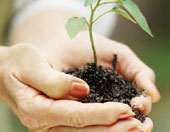 Getting a jumpstart on spring gardening
Getting a jumpstart on spring gardening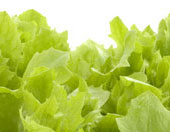 Fall gardening tips and tricks
Fall gardening tips and tricks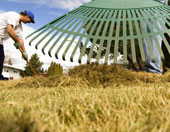 Composting kitchen and yard scraps
Composting kitchen and yard scraps How music and laughter can effect our health
How music and laughter can effect our health Simple to build, Do It Yourself standup desk
Simple to build, Do It Yourself standup desk Steps for keeping your eyesight healthy as you age
Steps for keeping your eyesight healthy as you age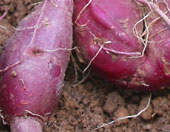 Guide to growing purple sweet potatoes
Guide to growing purple sweet potatoes What's radon in the home and why should I be concerned
What's radon in the home and why should I be concerned Simple and healthy smoothie recipes
Simple and healthy smoothie recipes What you can do to keep your Immune System strong
What you can do to keep your Immune System strong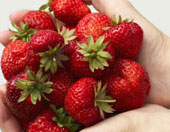 Gardener's guide to growing strawberries
Gardener's guide to growing strawberries Causes of stress and how to deal with it
Causes of stress and how to deal with it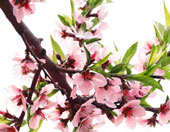 Poisonous plants in your home and garden
Poisonous plants in your home and garden